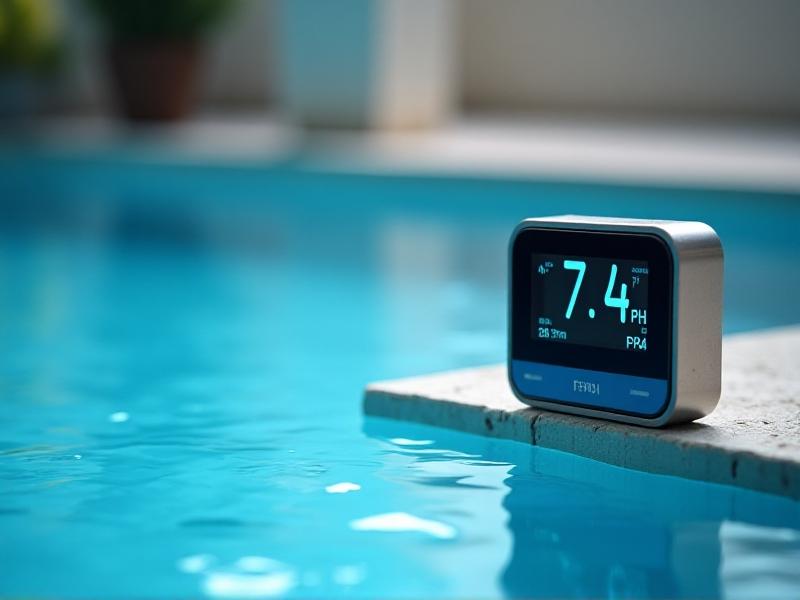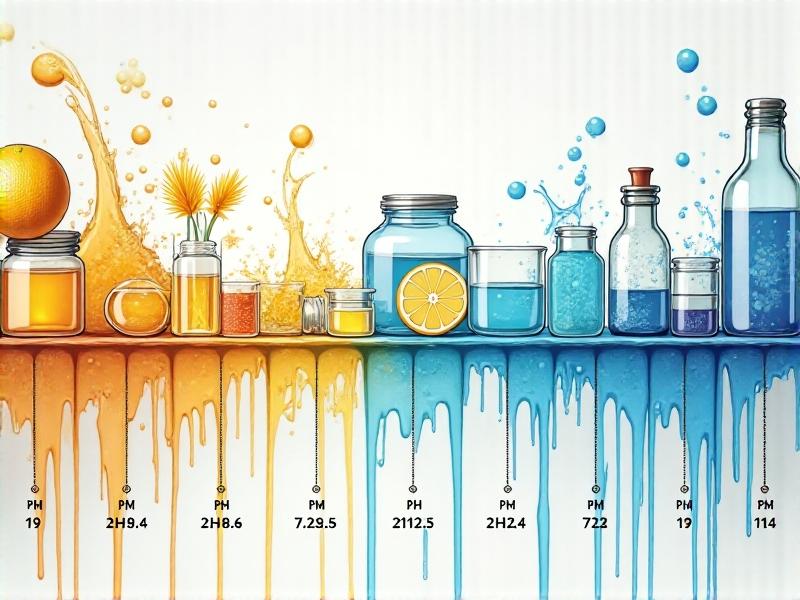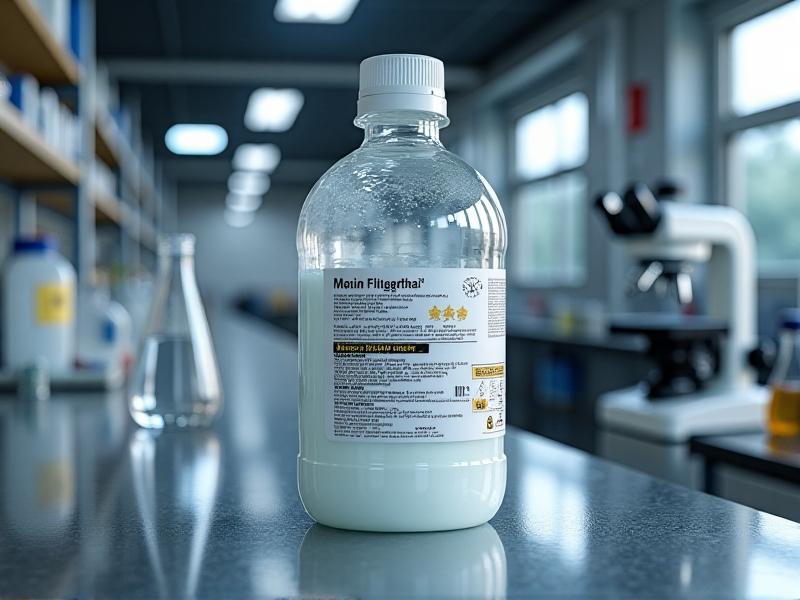pH Stability in High-Usage Therapy Pools
Understanding pH Stability in High-Usage Therapy Pools
Maintaining pH stability in high-usage therapy pools is a critical aspect of ensuring water quality and user safety. Therapy pools, often used for rehabilitation, hydrotherapy, and relaxation, experience heavy foot traffic, which can significantly impact water chemistry. The pH level, which measures the acidity or alkalinity of the water, plays a vital role in the effectiveness of disinfectants, user comfort, and the longevity of pool equipment. When pH levels fluctuate, it can lead to skin and eye irritation, reduced chlorine efficacy, and even damage to the pool’s infrastructure. Understanding the factors that influence pH stability is the first step toward creating a safe and enjoyable environment for users.
High-usage therapy pools are particularly susceptible to pH fluctuations due to the constant introduction of organic matter, such as sweat, oils, and lotions, from users. Additionally, the use of therapeutic additives, like magnesium salts or essential oils, can further complicate pH management. To maintain stability, pool operators must regularly monitor pH levels and adjust them as needed. This often involves the use of pH buffers, which help resist changes in acidity or alkalinity. By understanding the unique challenges of therapy pools, operators can implement strategies to ensure consistent pH levels and optimal water quality.

The Science Behind pH and Its Impact on Water Quality
pH is a measure of the hydrogen ion concentration in water, ranging from 0 (highly acidic) to 14 (highly alkaline), with 7 being neutral. In therapy pools, the ideal pH range is typically between 7.2 and 7.8. This range ensures that disinfectants like chlorine remain effective, as pH levels outside this range can reduce their ability to kill harmful bacteria and viruses. Additionally, maintaining the correct pH level is essential for user comfort. Water that is too acidic can cause skin and eye irritation, while water that is too alkaline can lead to scaling and cloudy water.
The relationship between pH and water quality is complex and influenced by several factors. For example, the presence of carbon dioxide (CO2) in water can lower pH levels, making the water more acidic. Conversely, the addition of alkaline substances, such as sodium carbonate, can raise pH levels. In high-usage therapy pools, the constant introduction of organic matter can lead to the formation of chloramines, which not only reduce the effectiveness of chlorine but also contribute to unpleasant odors and irritation. Understanding the science behind pH and its impact on water quality is essential for effective pool management.

Challenges of Maintaining pH Stability in High-Usage Pools
High-usage therapy pools present unique challenges when it comes to maintaining pH stability. The sheer volume of users introduces a significant amount of organic matter into the water, which can alter pH levels and create a breeding ground for bacteria. Additionally, the use of therapeutic additives, such as essential oils or magnesium salts, can further complicate pH management. These substances can react with disinfectants and other chemicals in the water, leading to unpredictable pH fluctuations.
Another challenge is the frequent turnover of water in therapy pools. While regular water replacement is necessary to maintain cleanliness, it can also disrupt pH stability. Fresh water often has a different pH level than the existing pool water, requiring adjustments to bring it into the desired range. Furthermore, the use of automated chemical dosing systems, while convenient, can sometimes lead to overcorrection if not properly calibrated. To address these challenges, pool operators must adopt a proactive approach to pH management, including regular testing, careful chemical dosing, and the use of pH buffers to maintain stability.

Strategies for Effective pH Management in Therapy Pools
Effective pH management in therapy pools requires a combination of regular monitoring, proper chemical dosing, and the use of pH buffers. Regular testing is essential to identify pH fluctuations early and make necessary adjustments. Pool operators should test pH levels at least twice daily, or more frequently in high-usage settings. Automated chemical dosing systems can help maintain consistent pH levels, but they must be carefully calibrated to avoid overcorrection.
pH buffers, such as sodium bicarbonate, are another valuable tool for maintaining stability. These substances help resist changes in pH by neutralizing acids or bases added to the water. Additionally, pool operators should consider the impact of therapeutic additives on pH levels and adjust their chemical dosing accordingly. For example, magnesium salts can increase alkalinity, requiring additional acid to maintain the desired pH range. By implementing these strategies, pool operators can ensure consistent pH levels and optimal water quality in therapy pools.
The Role of Technology in pH Monitoring and Control
Advancements in technology have revolutionized pH monitoring and control in therapy pools. Automated systems, such as digital pH meters and chemical dosing controllers, allow for precise and consistent management of water chemistry. These systems can continuously monitor pH levels and automatically adjust chemical dosing as needed, reducing the risk of human error and ensuring optimal water quality. Additionally, many modern systems are equipped with remote monitoring capabilities, allowing pool operators to track pH levels in real-time from their smartphones or computers.
Another technological innovation is the use of cloud-based software to analyze water chemistry data over time. This can help pool operators identify trends and predict potential issues before they arise. For example, if pH levels consistently drop during peak usage hours, operators can adjust their chemical dosing schedule to compensate. By leveraging technology, pool operators can streamline pH management and focus on providing a safe and enjoyable experience for users.
Best Practices for Ensuring pH Stability in Therapy Pools
Ensuring pH stability in therapy pools requires a combination of best practices and proactive management. First and foremost, regular testing is essential to identify and address pH fluctuations early. Pool operators should test pH levels at least twice daily, or more frequently in high-usage settings. Additionally, it’s important to maintain proper chemical balance, including chlorine levels and alkalinity, as these factors can influence pH stability.
Another best practice is to use pH buffers, such as sodium bicarbonate, to resist changes in acidity or alkalinity. Pool operators should also consider the impact of therapeutic additives on pH levels and adjust their chemical dosing accordingly. Finally, investing in technology, such as automated chemical dosing systems and digital pH meters, can help streamline pH management and reduce the risk of human error. By following these best practices, pool operators can ensure consistent pH levels and optimal water quality in therapy pools.
The Importance of pH Stability for User Safety and Comfort
pH stability is not just a matter of water quality—it’s also essential for user safety and comfort. Water that is too acidic or too alkaline can cause skin and eye irritation, making the therapy pool experience unpleasant for users. Additionally, pH levels outside the ideal range can reduce the effectiveness of disinfectants, increasing the risk of waterborne illnesses. For individuals with sensitive skin or pre-existing conditions, such as eczema or psoriasis, maintaining the correct pH level is particularly important.
Beyond safety, pH stability also contributes to the overall therapeutic benefits of the pool. For example, water with a balanced pH level can enhance the effectiveness of therapeutic additives, such as magnesium salts, which are often used for muscle relaxation and pain relief. By prioritizing pH stability, pool operators can create a safe, comfortable, and therapeutic environment for users.
Conclusion: The Key to Long-Term Success in Therapy Pool Management
Maintaining pH stability in high-usage therapy pools is a complex but essential aspect of pool management. By understanding the science behind pH, addressing the unique challenges of therapy pools, and implementing effective strategies, pool operators can ensure optimal water quality and user safety. Leveraging technology and following best practices can further streamline pH management and reduce the risk of fluctuations. Ultimately, prioritizing pH stability is the key to creating a safe, comfortable, and therapeutic environment for users, ensuring the long-term success of therapy pool operations.







